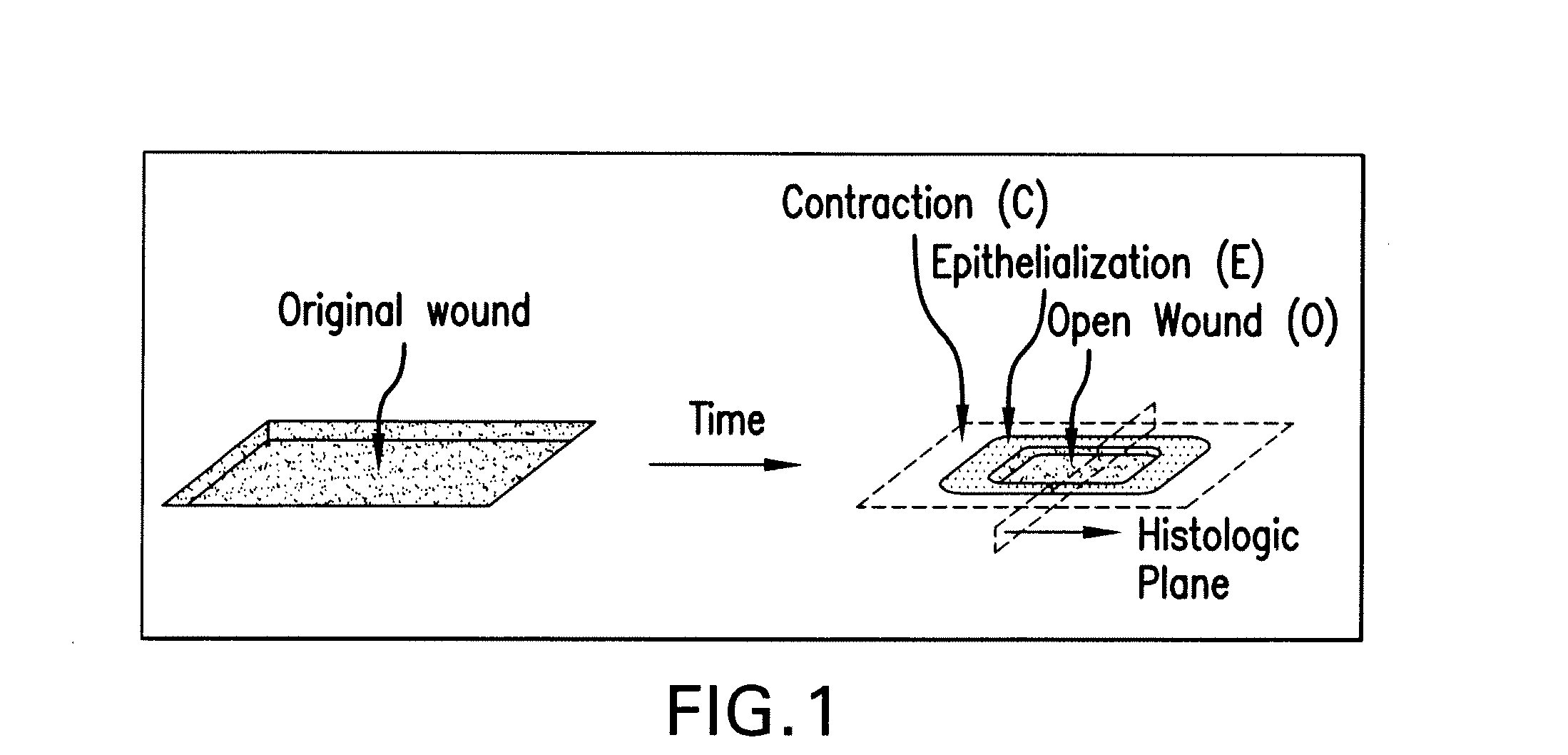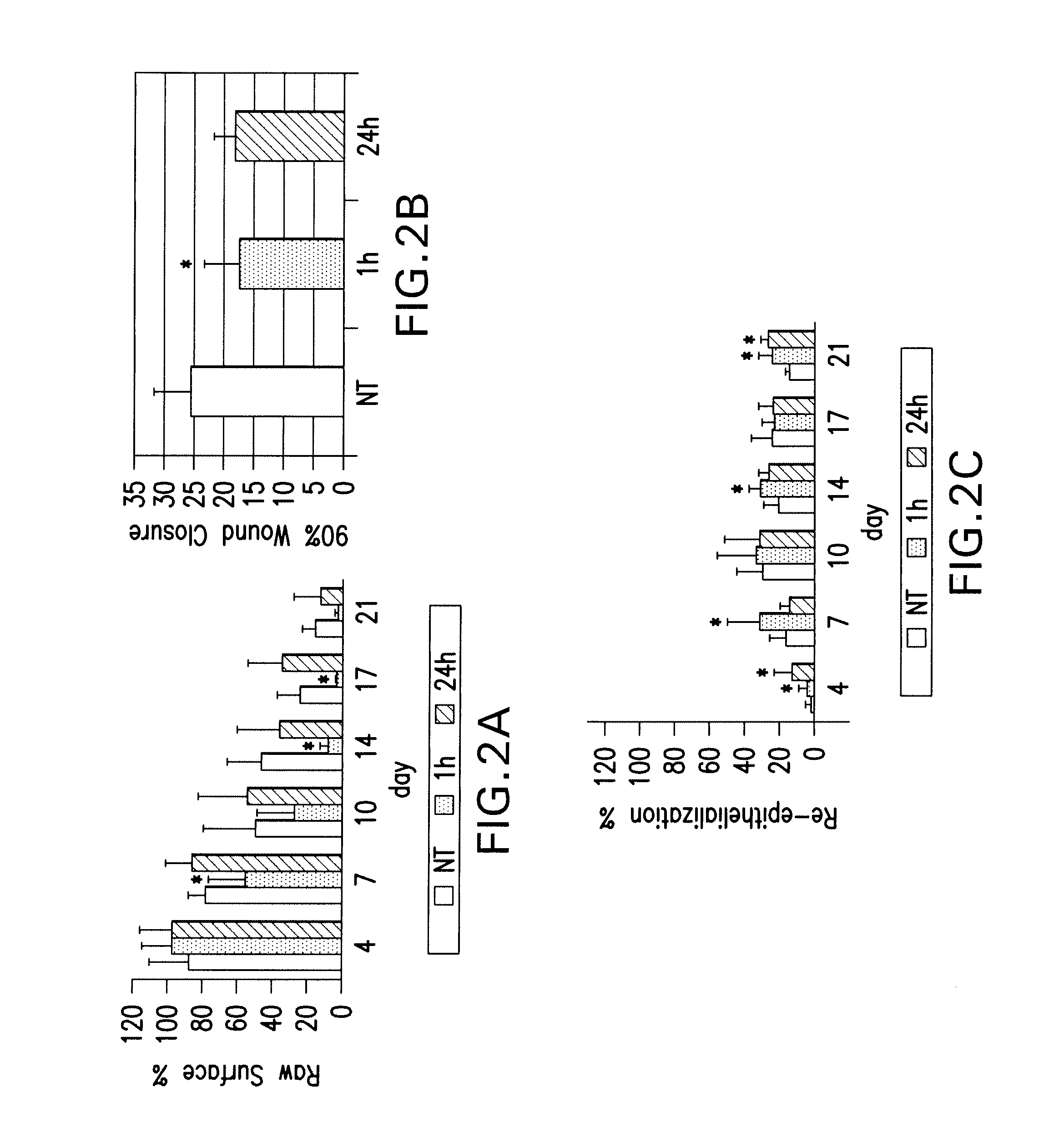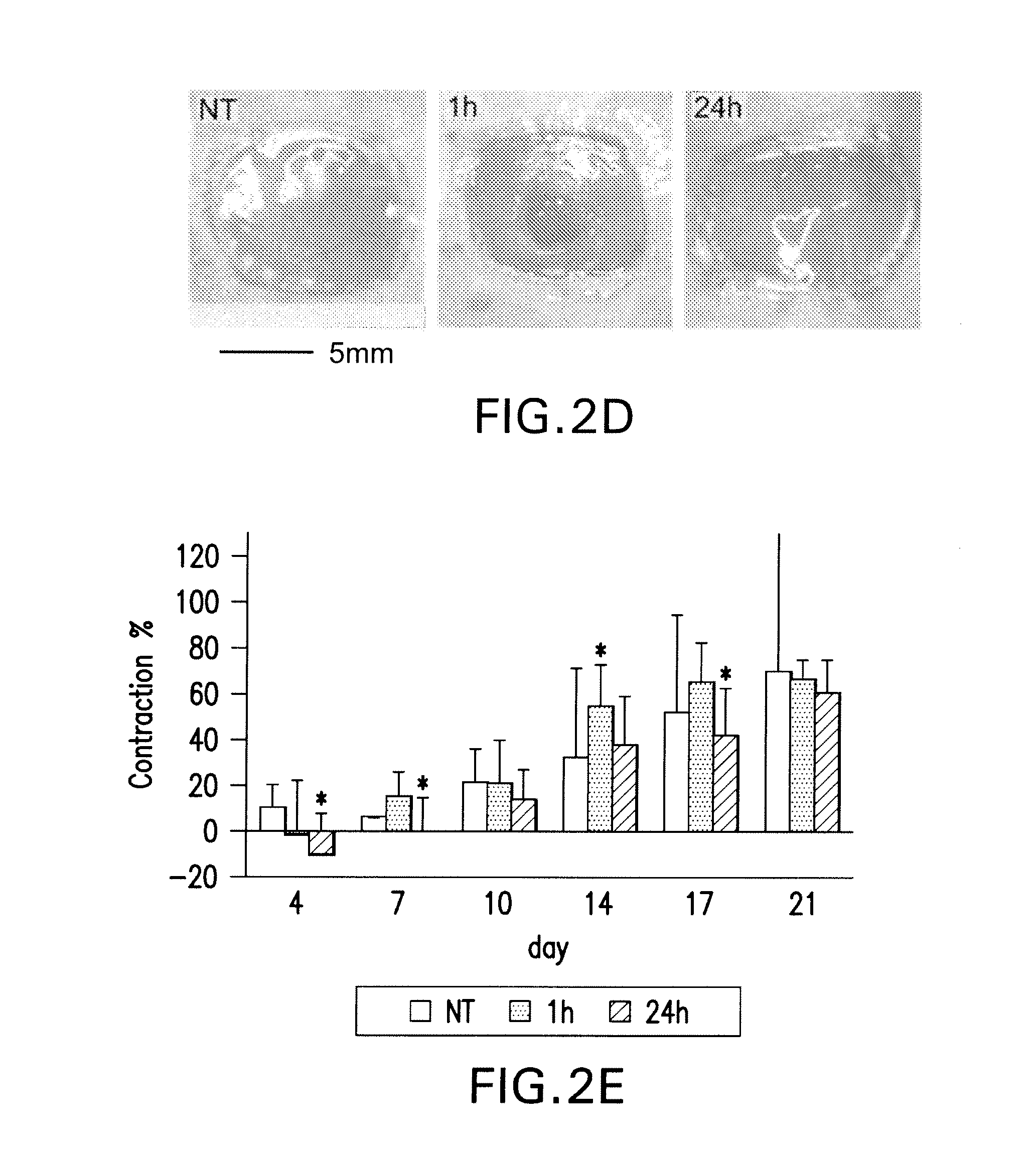Hemostatic compositions and therapeutic regimens
a composition and composition technology, applied in the field of hemostatic compositions and therapeutic regimens, can solve the problems of many direct and indirect costs of wound treatment, and achieve the effects of reducing the need for wound dressing changes, improving wound healing, and advantageous us
- Summary
- Abstract
- Description
- Claims
- Application Information
AI Technical Summary
Benefits of technology
Problems solved by technology
Method used
Image
Examples
example 1
6.1 Example 1
Effects of poly-N-acetylglucosamine (pGlcNAc) patch on wound healing in db / db mouse.
[0125]6.1.1 Materials and Methods
[0126]Preparation of pGlcNAc Patch. The pGlcNAc patch SyvekPatch™ (Marine Polymer Technologies, Inc., Danvers, Mass.) consists of microalgal-derived nanofibers produced as previously described (see Vournakis et al. U.S. Pat. Nos. 5,623,064; and 5,624,679, the content of each of which is incorporated herein by reference in its entirety). Briefly, microalgae were cultured in unique bioreactor conditions using a defined growth media. Following the harvest of microalgae from high-density cultures, nanofibers were isolated via a stepwise separation and purification process resulting in batches of pure nanofibers suspended in water for injections (wfi). Fibers were formulated into patches by concentration and oven drying, and were packaged and sterilized by gamma-irradiation. Nanofiber dimensions average 20-50 nm×1-2 nmט100 μm. Batches of fibers were individua...
example 2
6.2 Example 2
Effects of short poly-N-acetylglucosamine (sNAG) membrane on wound healing in db / db mouse
[0145]6.2.1 Materials and Methods
[0146]Preparation of sNAG Membrane. The sNAG membrane consists of microalgal-derived nanofibers produced as described in Section 6.1 supra., in which the fibers are shortened by irradiation. Briefly, the starting material contained 60 g of pGlcNAc slurry at a concentration of 1 mg / mL. The concentration of the pGlcNAc slurry was confirmed by filtering 5 mL into a 0.2 um filter. 15 L of pGlcNAc slurry containing 15 g pGlcNAc was filtered until formation of a wet cake. The wake cake was then transferred into a foil pouch, which is a gamma radiation compatible container, and subjected to 200 kGy gamma radiation. Other irradiation conditions were tested for their effects on pGlcNAc compositions, as reflected in FIG. 4A.
[0147]Wound Model and Study Design. The genetically mouse model described in Section 6.1 above was used to test the effect of sNAG membran...
example 3
6.3 Example 3
Effects of poly-N-acetylglucosamine (pGlcNAc) and sNAG on Endothelial Cell (EC) Movement and Angiogenesis
[0169]6.3.1 Materials and Methods
[0170]Tissue Culture, Growth Factors and Transfection. Pooled, multiple-donor human umbilical cord vein endothelial cells (EC) (Cambrex) were maintained at 37° C. with 5% CO2 in endothelial basal medium 2 (Cambrex) supplemented with EC growth medium 2 SingleQuots as described by Cambrex procedures. Serum starvation was performed at 80-90% confluency in RPMI-1640 supplemented with 0.1% fetal calf serum (Gibco BRL) for 24 h followed by stimulation with VEGF 165 (20 ng / ml, R&D Systems) or with highly purified pGlcNAc nanofibers or sNAG nanofibers in sterile water (provided by Marine Polymer Technologies, Inc., Danvers, Mass., USA) with the amounts indicated in the text. For inhibition using the VEGFR inhibitor SU5416 (10 μM; R&D Systems) cells were pretreated for 15 min prior to stimulation with VEGF, pGlcNAc or sNAG.
[0171]Human umbilica...
PUM
| Property | Measurement | Unit |
|---|---|---|
| length | aaaaa | aaaaa |
| length | aaaaa | aaaaa |
| length | aaaaa | aaaaa |
Abstract
Description
Claims
Application Information
 Login to View More
Login to View More - R&D
- Intellectual Property
- Life Sciences
- Materials
- Tech Scout
- Unparalleled Data Quality
- Higher Quality Content
- 60% Fewer Hallucinations
Browse by: Latest US Patents, China's latest patents, Technical Efficacy Thesaurus, Application Domain, Technology Topic, Popular Technical Reports.
© 2025 PatSnap. All rights reserved.Legal|Privacy policy|Modern Slavery Act Transparency Statement|Sitemap|About US| Contact US: help@patsnap.com



